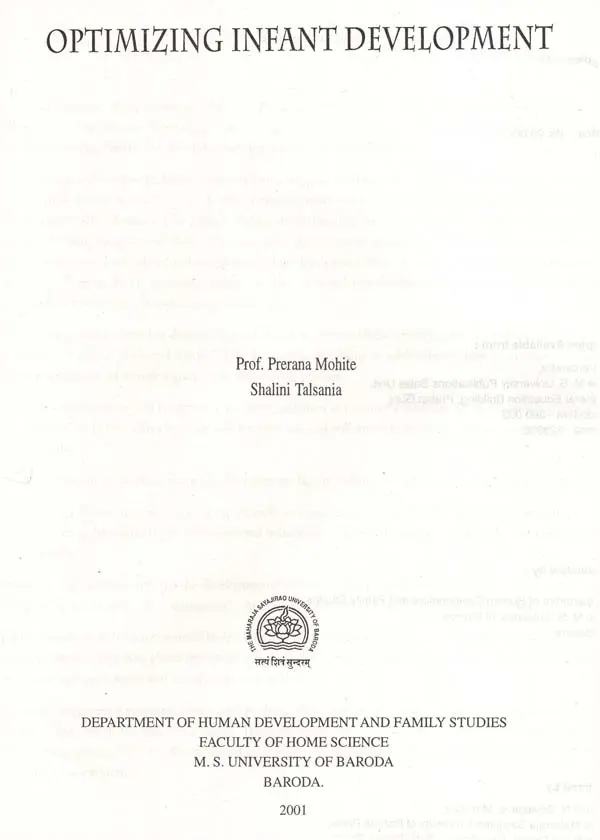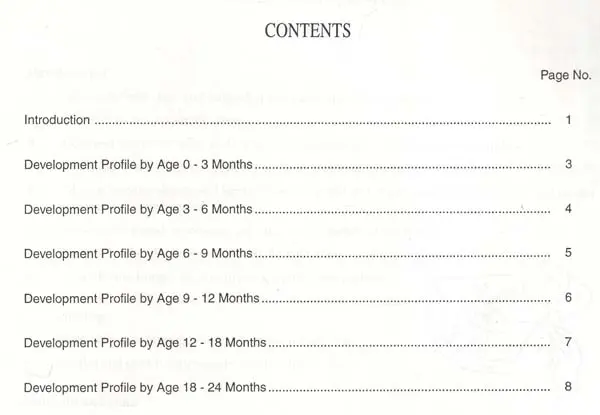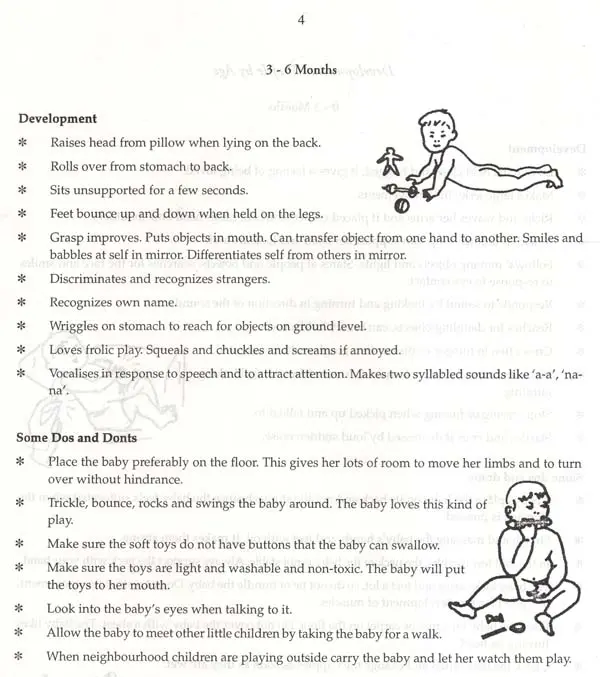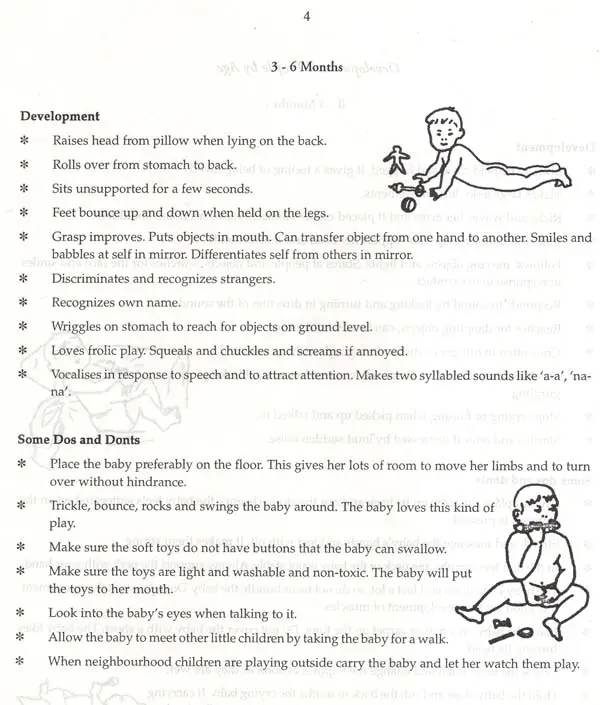
Optimizing Infant Development
Book Specification
| Item Code: | UAQ764 |
| Author: | Prerana Mohite And Shalini Talsania |
| Publisher: | The Mahraja Siyajirao University of Barodra |
| Language: | English |
| Edition: | 2000 |
| Pages: | 8 |
| Cover: | PAPERBACK |
| Other Details | 11.30 X 8.90 inch |
| Weight | 50 gm |
Book Description
From birth through till the adulthood, children change visibly and behaviourally. Their growth in size and strength in easily observed but they also show many other changes in what can they do with their minds and bodies. The totality of all these changes, visible and nonvisible, it what we term as "Development".
Researches over the last few decades have transformed the view of babies and toddlers. The view that babies are passive, has been undermined. Researches have demonstrated that even very young babies have working senses. Their hearing, sight, touch, smell and taste are all present Babies show that they are aware of their environment, they have great interest in human faces around them. They are active and relate to human faces and feel of human contact. It is important that concerned adults understand how babies develop and what are some crucial ways and strategies to deal with babies. Parents, family members, daycare workers need to know developmental profile of infants and essential ways to interact with them for optimizing development.
This booklet provides a brief but detailed account on development of babies from birth to 24 months along with some tips in form of simple "Do's and Don'ts" that can provide directions to adults about "how to interact with babies". There are advantages of having a grasp of developmental profiles.
Early years workers and parents can use these guidelines to monitor a baby's progress. A worker will be alert to observe the babies who are doing well for their age and will know that they need more challenge in everyday activities.
It will also make workers aware of babies who are lagging behind and who need some extra help and support.
These guidelines may also serve as a gross early screeing device to identify infants who show considerable delay in reaching the requirements developmental behaviour. These can be infants 'at risks' who need special referrals and inputs.
However, it must be reiterated that the developmental statements described for each age group are to be understood as "guidelines" and not as "absolute statements". At every age there is a scope for individual differences.
It is to be emphasized that parents or child development workers should not become too fixed on the actual age ranges. The real purpose of knowing about infants' progress is to be able to use this developmental information for planning and organizing happy, warm and stimulating environment.
Also, the developmental statements contained in this booklet are not exhaustive. Within development, babies may share many patterns in the skills they learn. There are many individual differences and cultural differences which refrain us from stating "What children should be doing". At no point can we use these guidelines for "Prediction about individual children.










